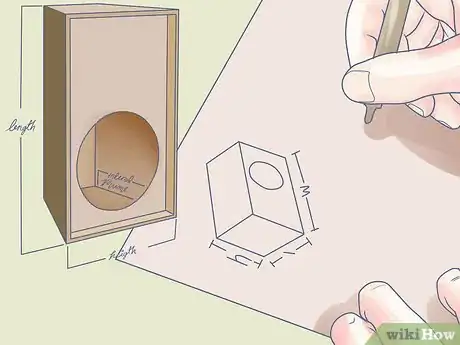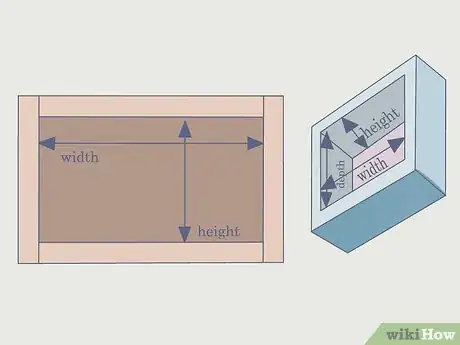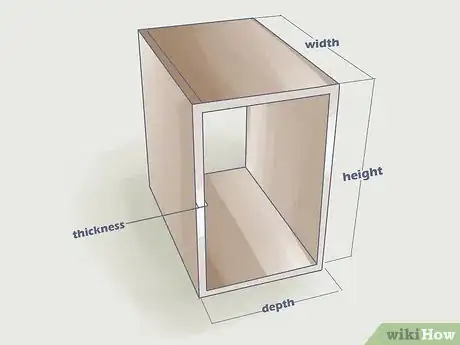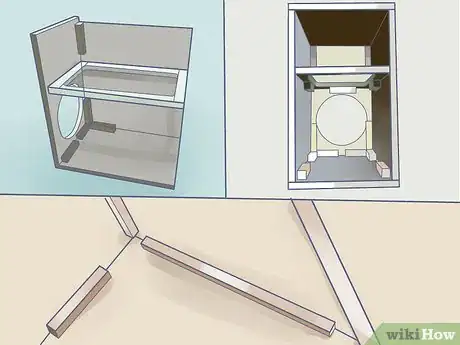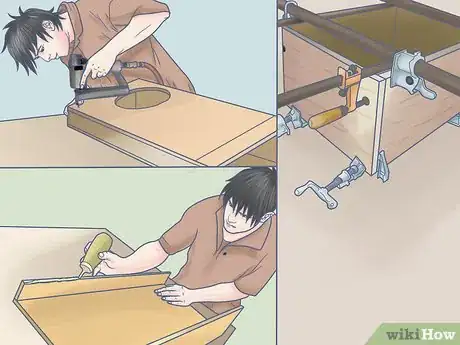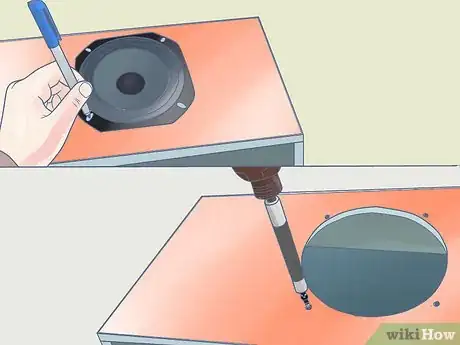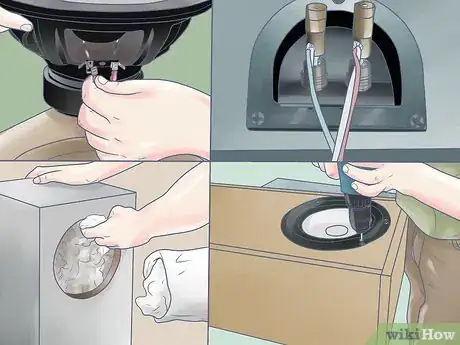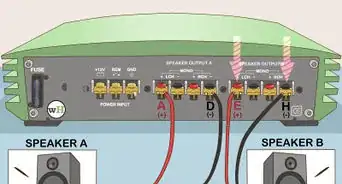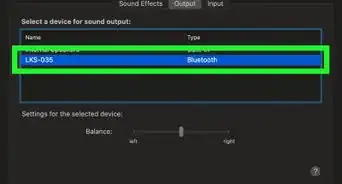This article was co-authored by wikiHow staff writer, Eric McClure. Eric McClure is an editing fellow at wikiHow where he has been editing, researching, and creating content since 2019. A former educator and poet, his work has appeared in Carcinogenic Poetry, Shot Glass Journal, Prairie Margins, and The Rusty Nail. His digital chapbook, The Internet, was also published in TL;DR Magazine. He was the winner of the Paul Carroll award for outstanding achievement in creative writing in 2014, and he was a featured reader at the Poetry Foundation’s Open Door Reading Series in 2015. Eric holds a BA in English from the University of Illinois at Chicago, and an MEd in secondary education from DePaul University.
wikiHow marks an article as reader-approved once it receives enough positive feedback. In this case, 88% of readers who voted found the article helpful, earning it our reader-approved status.
This article has been viewed 615,771 times.
Learn more...
Learning how to build a speaker box allows you to customize the fit and design of the box to match your desired audio quality. The basic two-speaker box designs are sealed and vented. This article details how to build a sealed speaker box, which separates the front and rear sound waves to improve the bass.
Steps
-
1Determine the size of the speaker box.
- Reference the speaker’s template to find the speaker’s measurements.
- The template is included with the rest of the basic speaker information upon purchase. If the template can’t be found, contact the manufacturer for the information or measure the speaker yourself:
- The template is included with the rest of the basic speaker information upon purchase. If the template can’t be found, contact the manufacturer for the information or measure the speaker yourself:
- Figure the depth (front-to-back dimension) of the speaker box by adding 2 inches (5 cm) to the depth of the speaker.
- Use the speaker’s height and length measurements as the box’s internal height and length dimensions.
- Multiply the depth, height and length to determine the internal volume of the box.
- Reference the speaker’s template to find the speaker’s measurements.
-
2Check the internal volume against the manufacturer’s recommended speaker box internal volume.
- Adjust the measurements as needed until you reach the recommended range.
Advertisement -
3Add the thickness of the wood to your dimensions to figure the box’s external dimensions.
-
4Measure the height, width and depth of the space available for the speaker box to be sure the box will fit.
- Use your measurements to sketch out the speaker box depending on the space you need to fit it into.
-
5Construct the speaker box.
- Trace a pattern onto the MDF (medium density fiberboard) using the exterior box.
- Include the circular openings needed for the face of the speaker and the connectors. The measurements are found on the speaker’s template. If there is no template, trace the circumference of the face of the speaker on the front piece and a 2-inch (5-cm) hole on each side piece for the connectors.
- Use a jigsaw to cut out the pattern pieces.
- Cut out the circular openings with a router.
- Sand all rough edges.
- Trace a pattern onto the MDF (medium density fiberboard) using the exterior box.
-
6Brace the speaker box with 1-inch x 1-inch (2-1/2 cm x 2-1/2 cm) strips of wood (battens).
- Cover 60 percent of each interior edge with a batten.
- Screw the batten into the MDF.
-
7Fit the cut pieces together to make sure they match up.
-
8Pre-drill all holes and bead carpenter’s glue along each joint as you assemble the box.
- Use furniture clamps to keep the speaker box aligned.
-
9Place the speaker in the box and check that it fits.
-
10Mark the mounting screw holes while the speaker is in the box.
- Remove the speaker and pre-drill the mounting screw holes.
- Allow the glue to dry.
-
11Apply silicon caulk over the speaker box’s internal seams and all openings to ensure the box is airtight.
- Let the silicon caulk cure for 12 to 24 hours.
-
12Set up the speaker box.
- Hook up the speaker wires.
- Cover the back, top and bottom of the speaker box with 1 inch (2-1/2 cm) of poly fill to minimize resonance.
- Insert the speaker and run the connectors through their appropriate holes.
- Secure the speaker with screws through the mounting holes.
- Caulk any openings to ensure the speaker box is airtight.
- Allow the caulk to cure for 12 to 24 hours.
Community Q&A
-
QuestionHow do I build a ported box for a 15" subwoofer?
 Community AnswerThis method would work -- you just need to adjust the measurements to fit a 15" driver. It's probably easier to look up a guide designed specifically for a sub though.There are loads of them on car audio sites.
Community AnswerThis method would work -- you just need to adjust the measurements to fit a 15" driver. It's probably easier to look up a guide designed specifically for a sub though.There are loads of them on car audio sites. -
QuestionWhat is poly fill (referenced in step 12 of how to build a speaker box)?
 Community AnswerIt's Polyester fluff for filling stuffed animals, comforters, and I assume for stapling to the inside of this box. Ask someone at a craft store or in the craft section of Walmart.
Community AnswerIt's Polyester fluff for filling stuffed animals, comforters, and I assume for stapling to the inside of this box. Ask someone at a craft store or in the craft section of Walmart. -
QuestionHow do I build an 8 inch speaker box?
 Community AnswerJust follow the steps in the article.
Community AnswerJust follow the steps in the article.
Warnings
- Don’t construct a speaker box that has walls with equal dimensions. The shape diminishes the speaker’s effectiveness.⧼thumbs_response⧽
Things You'll Need
- Speaker with all necessary wires and connectors
- MDF (medium density fiberboard)
- Wood for battens
- Screws
- Wood glue
- Furniture clamps
- Poly fill
- Silicon caulk
- Sandpaper
- Jigsaw
- Router with ¾-inch (2 cm) bit
- Electric drill with bits for drilling holes and driving screws
